Global Spotlight
Back to contentsAsia
Asia
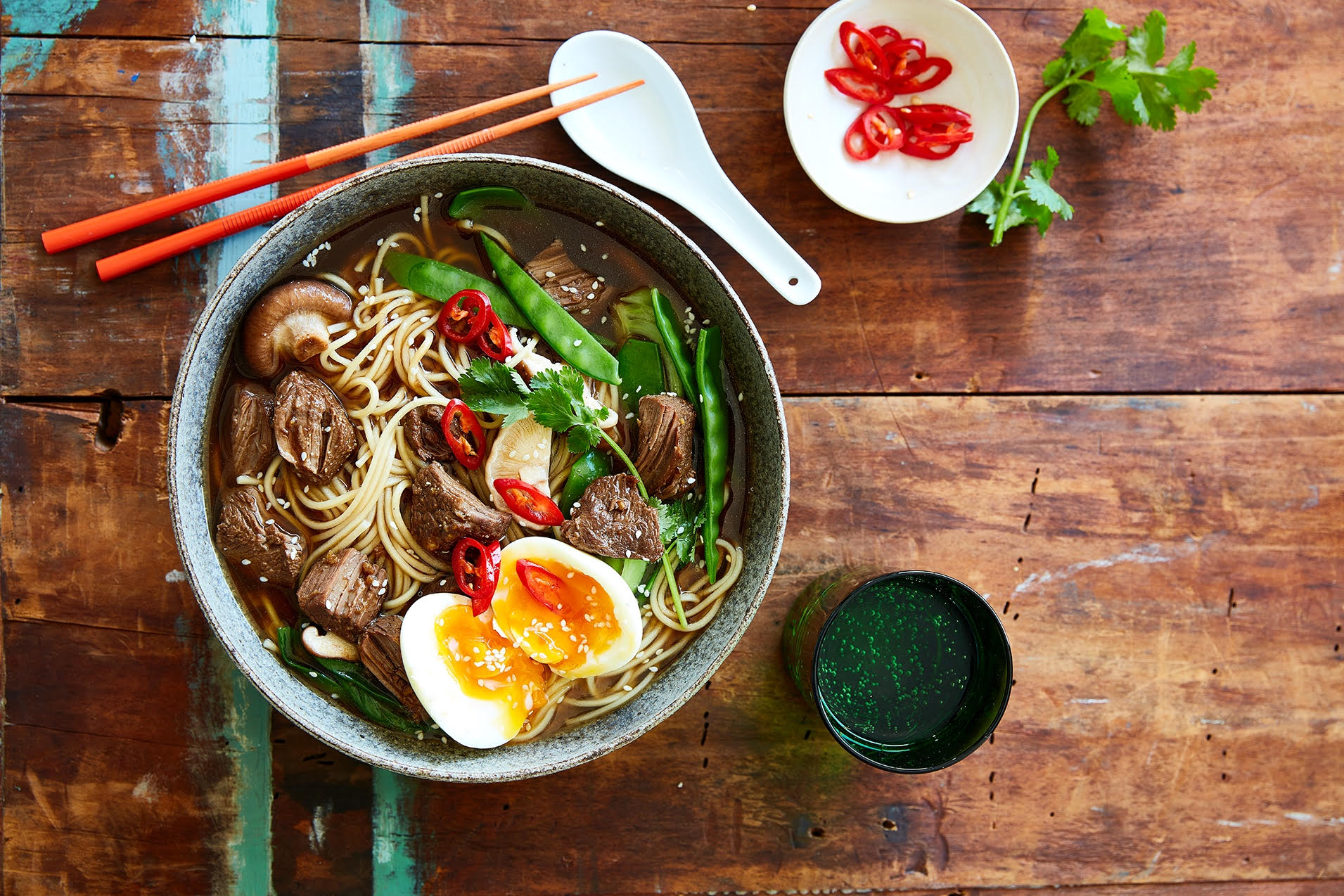
With a young population, rapid urbanisation and rising incomes, Southeast Asia is one of the fastest-growing consumer markets in the world.
Demand for Australian beef varies across Southeast Asia with Singapore the largest destination for Australian chilled beef exports and the Philippines the largest destination for frozen manufacturing beef.
In 2017, Southeast Asia accounted for around 6.4% of Australia’s total beef exports consisting mainly of manufacturing beef.
Southeast Asia –
Australian Beef Exports 2017
— 6.4% of Australia’s global beef export volume
— 79% grass-fed
— 68% frozen
— 58% manufacturing beef
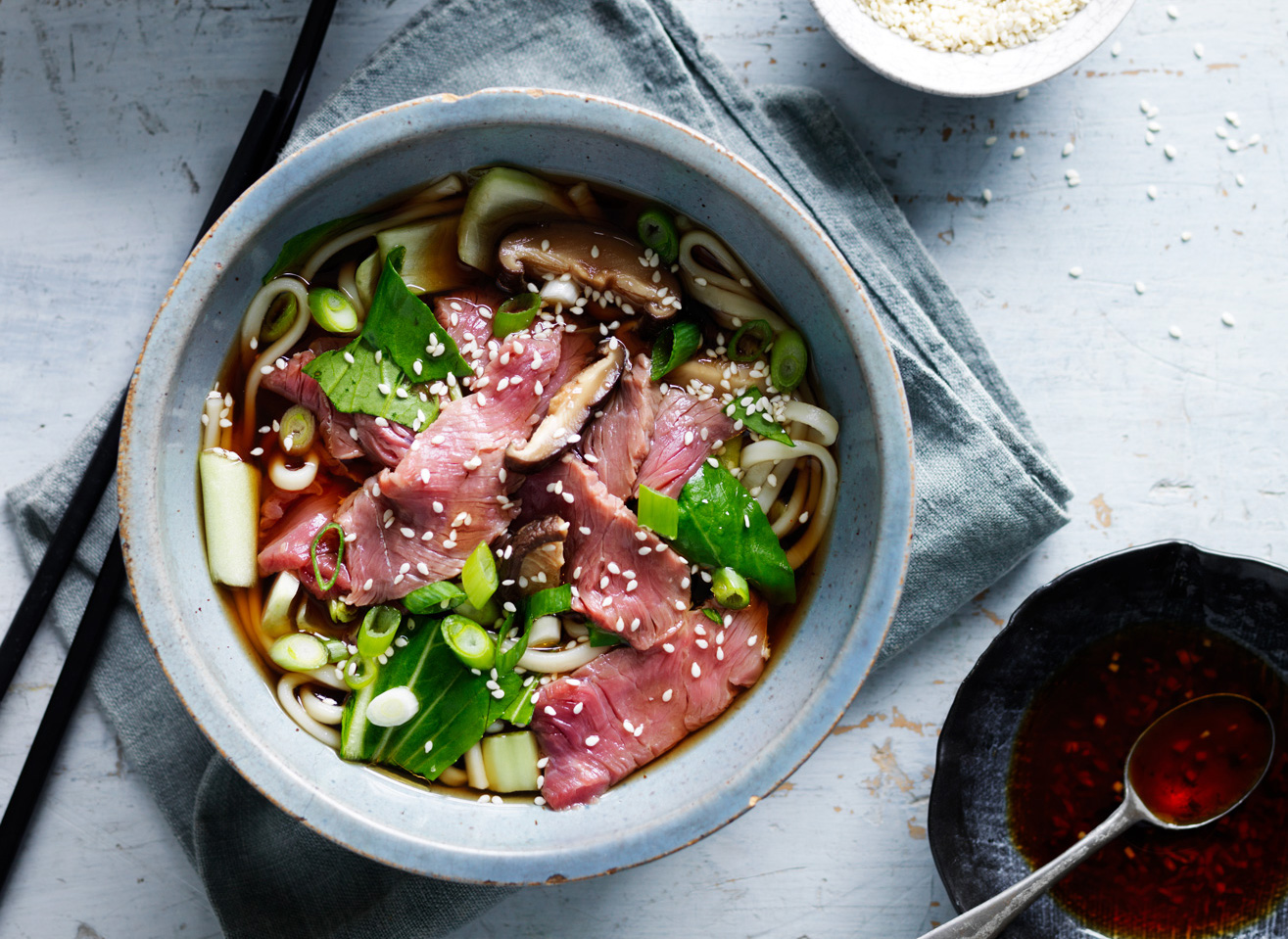
Food Service
The foodservice sector in Southeast Asia is vibrant and dynamic. Young, urban consumers with increasing incomes have a strong appetite for international restaurants offering Western-style menus such as BBQ, Japanese-style hotpot and Korean barbecue.
Malaysia is forecast to be the fastest-growing market for foodservice in the region, largely supported by its rapid rise in the number of high-income households and urban population.
Despite the small market size, Singapore remains the most lucrative market for foodservice in the region underpinned by a large proportion of high-income consumers including local Singaporeans and international expats and a strong tourism sector.
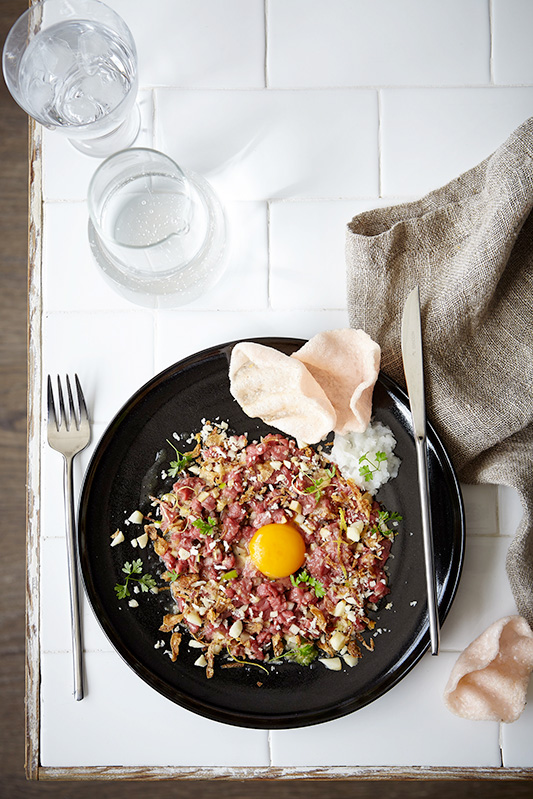
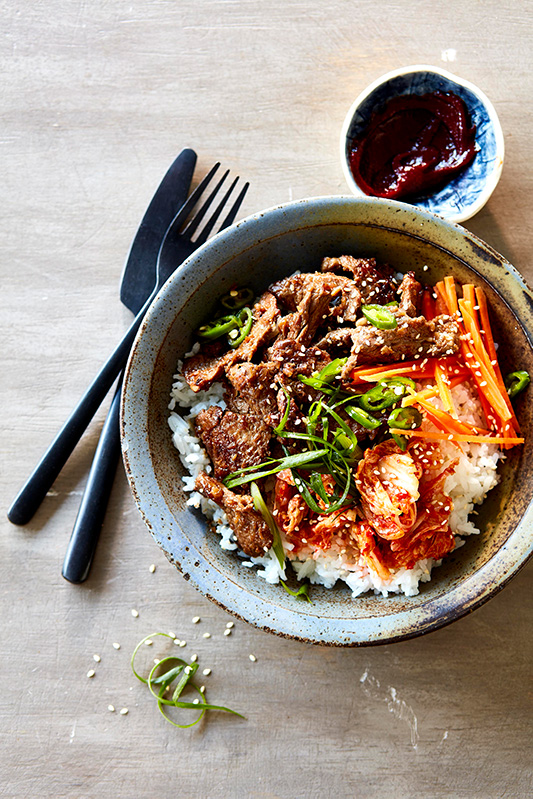
Singapore
Snapshot

Singapore has one of the world’s wealthiest consumer bases – its gross domestic product (GDP) per capita is almost forty times higher than that of Cambodia.
A cultural melting pot, its hugely diverse consumer base demands a range of cuisines and culinary choices. With a high volume of expats and Singaporean locals, there is a huge range of foodservice options from high-end dining through to cost-effective street food.
Quick Service Restaurants and Full Service Restaurants take the bulk of the value share in the foodservice channel, accounting for around 45% and 25% respectively.
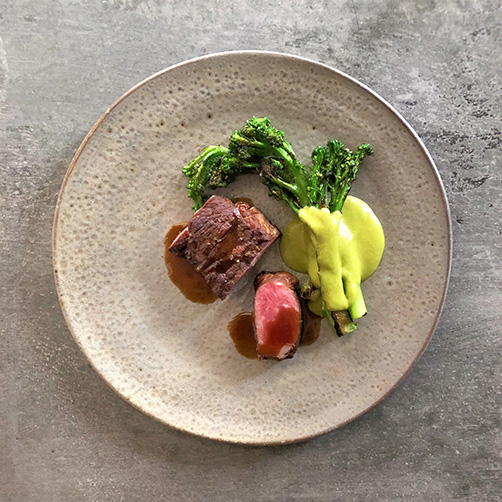
Cheek by Jowl
Sri Lankan born Aussie chef in Singapore – Rishi Naleendra is the first Sri Lankan chef to be awarded a Michelin star for his restaurant Cheek by Jowl. Rishi uses Australian beef for dishes like this Australian Angus Sirloin, charred broccoli & yuzukoshō butter.
Meatsmith Telok Ayer
Chef Andrew Baldus believes every piece of meat and every piece of wood is unique and it is his responsibility to find the perfect balance between the two to create the perfect dish – like his succulent 12 hour smoked beef brisket and pastrami burnt ends.
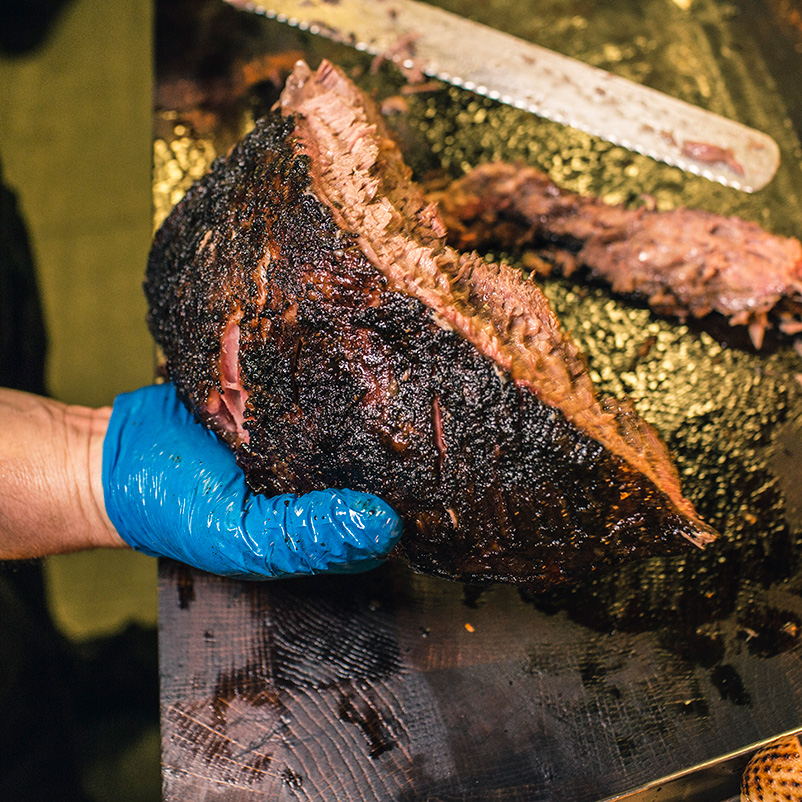
12 hour smoked Australian beef brisket
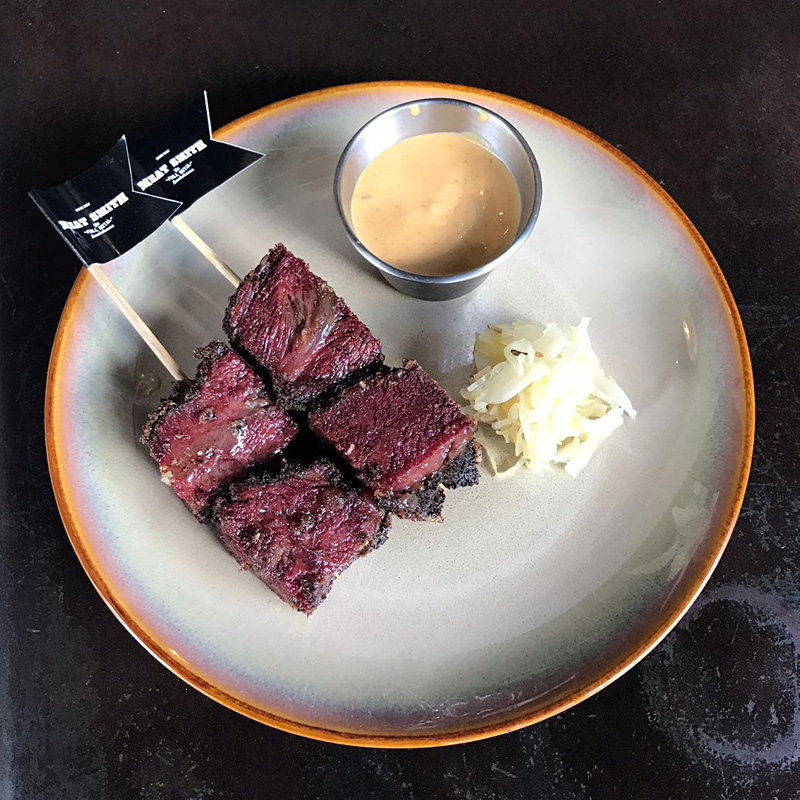
Pastrami burnt ends, Russian dressing and sauerkraut

Meatsmith Bourbon Aged Strip
How to: Meatsmith Bourbon Aged Strip
Chef Baldus tells us that the Bourbon Aged Strip was put together for a collaborative between Meatsmith and Wild Turkey. He uses Rangers Valley WX, a Wagyu/Angus cross to insure enough flavour and marbling to hold up to the ageing process. To start he takes a quality cut of Australian beef, preferably striploin or cube roll, a bottle of bourbon and enough cheesecloth to wrap around the beef. First he soaks the cheesecloth in the bourbon, then wraps it around the beef and places it on a rack. The remaining bourbon is then added to a spray bottle and the beef is sprayed every couple of days and rotated to let it dry evenly. He has tried ageing whole strips between 25 and 45 days and believes that the 45 days has a better flavour while the bourbon adds a sweet note to the beef.

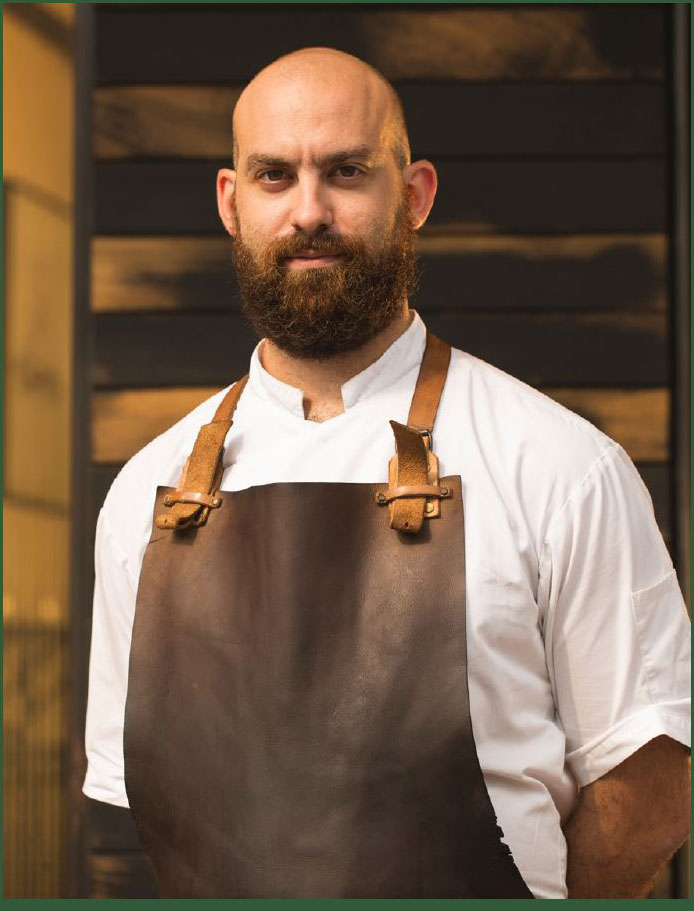
Dave Pynt doesn’t really need an introduction – but if you don’t know, now you know – Dave Pynt is a wood wizard. He believes there is a certain magic when it comes to cooking with wood and, if the accolades bestowed on his Singapore based venue Burnt Ends are anything to go by, then we think he might be right.
Originally from Perth, it was in the family backyard that his appetite for wood-fired cooking first ignited. His father’s love of a wood-fired barbeque forever spoilt Dave’s palate for food cooked any other way. With a taste for fire but a desire for experience, Dave has worked his way through some of the world’s best restaurants including Tetsuya’s, Noma and St John Bread & Wine to name but a few. However, it was in the Spanish Basque Country at Asador Etxebarri, number six on 2017 World’s 50 Best, where his flame for fire really started to burn.
Under the guidance of acclaimed self-taught chef Victor Arguinzoniz, Dave learnt the ancient technical skills and precision required to cook everything over fire. Using a range of carefully selected woods the team finesse with fire; fluctuating the flames to compliment the locally sourced and naturally cultivated produce.
Fuelling his own fire for experience, Dave designed and built his own outdoor wood-fired oven for an extended pop-up in the courtyard at London’s Climpson & Sons Roaster’s – and it was here that Burnt Enz was born. Churning out up to 350 covers a day; everything was grilled over the wood-fire with Dave masterfully adjusting the flames to suit the ingredients.
His reputation as a flame whispering wood wizard drew the attention of hotel and restaurant group Unlisted Collections and his concept was brought to Singapore for a permanent residency at his own restaurant – Burnt Ends. Opening in 2013, Burnt Ends won the Chef’s Choice Award and claimed number 10 spot at the 2017 Asia’s 50 Best Awards. At the heart of the restaurant is the four-tonne dual cavity oven, designed by Dave himself. Firing up to 700 degrees Celsius, the oven is fired by apple and almond wood and facilitates smoking, hot and slow roasting, baking, grilling and cooking directly on coals.
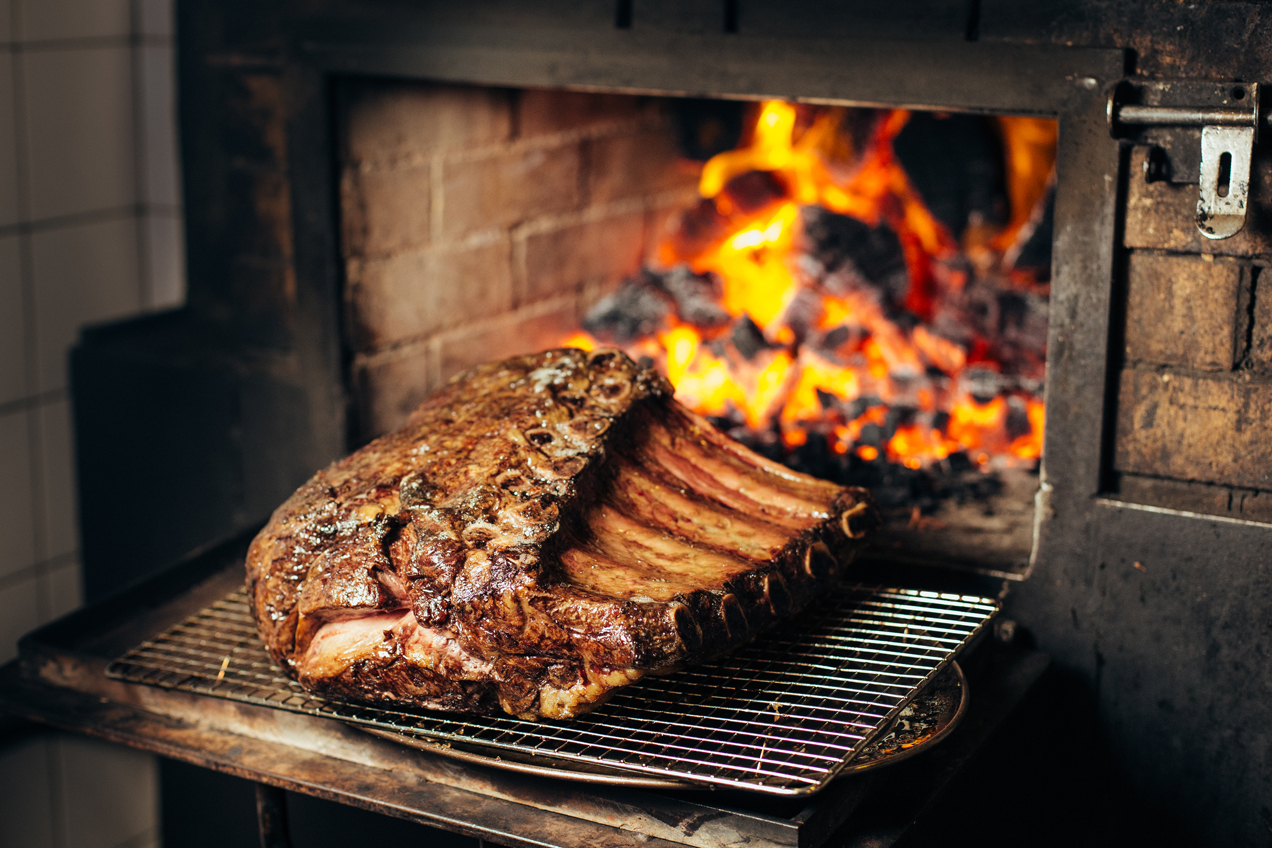
75 day dry aged rib of beef at Burnt Ends
Tell us about Singapore as a location for a restaurant – what are the challenges and the advantages of running a venue over there?
I think in hospitality, regardless of where you are in the world, the biggest challenge is always going to be your staff – finding good staff and retaining them is a global issue in our industry and in Singapore it’s no different. From a business perspective, Singapore is a great place to be – it is very much a food city and accepting of all types and styles of food, whatever you can dream. Then there are the customers – 6 million people all living within a 25km radius plus over 90 million visitors a year. It’s a central hub for business trips and local business laws over here allow you to entertain clients out to lunch and dinner, so for us that is always going to be a win.
Throughout your career – with your underground dinners in London, at the Burnt Enz pop up and at Burnt Ends, you love a collaboration or a guest chef. Why is this important to you?
Well I guess there’s two parts to that – when it’s me going away to collaborate, it is a huge challenge and an opportunity to experience a change of environment, to work with different ingredients and to always keep learning – it really pushes you and challenges you outside of what you’re used to. Then on the other end, when guest chefs come here, it’s a chance to get new ideas, to be inspired, to learn new techniques and work with like-minded individuals. I think doing things like this is beneficial for everyone involved – including the guests.
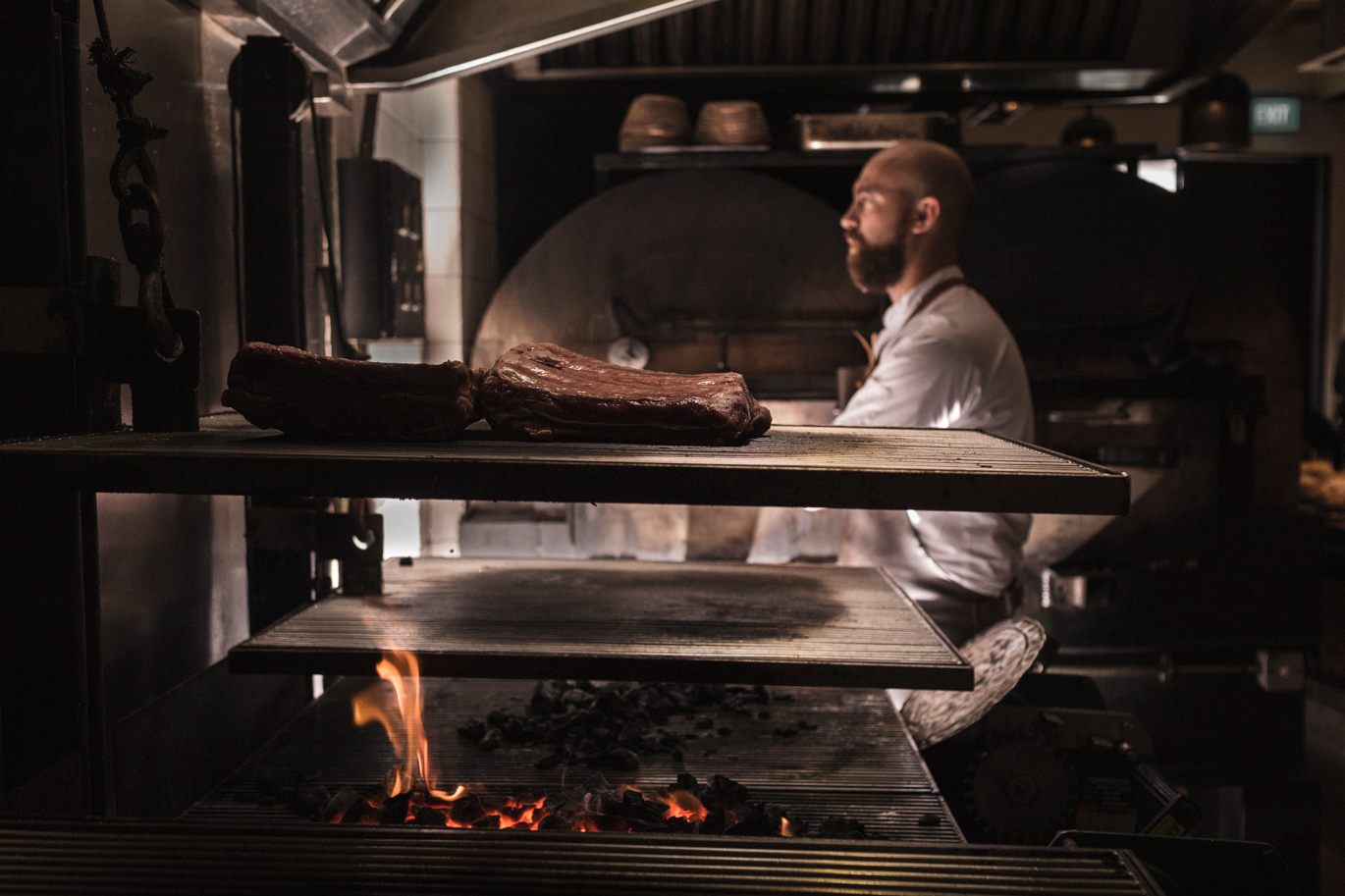
Dave uses the wood oven and the wood grill to prepare beef in the restaurant
Let’s talk about beef specifically – what’s on the grill at Burnt Ends?
In Asia, highly marbled Japanese beef is the benchmark, which means that there’s not a huge demand over here for grass fed. Generally, we use Australian Wagyu and Wagyu cross which we import directly from Blackmores and Rangers Valley. On a cut level, we use a huge range of primals and secondary cuts – rib eye, flat iron, skirt, chuck, hanger, short ribs, intercostals to name a few. On the menu we run a secondary cut, a cube roll and a dry aged option so they’ve each got their place and a role to play – it’s which cut we use from week to week that varies. We use both the wood oven and the wood grill to prepare our beef – steaks go straight on the grill and we might put a whole striploin in the coal oven for three or four hours or short ribs for five or six hours.
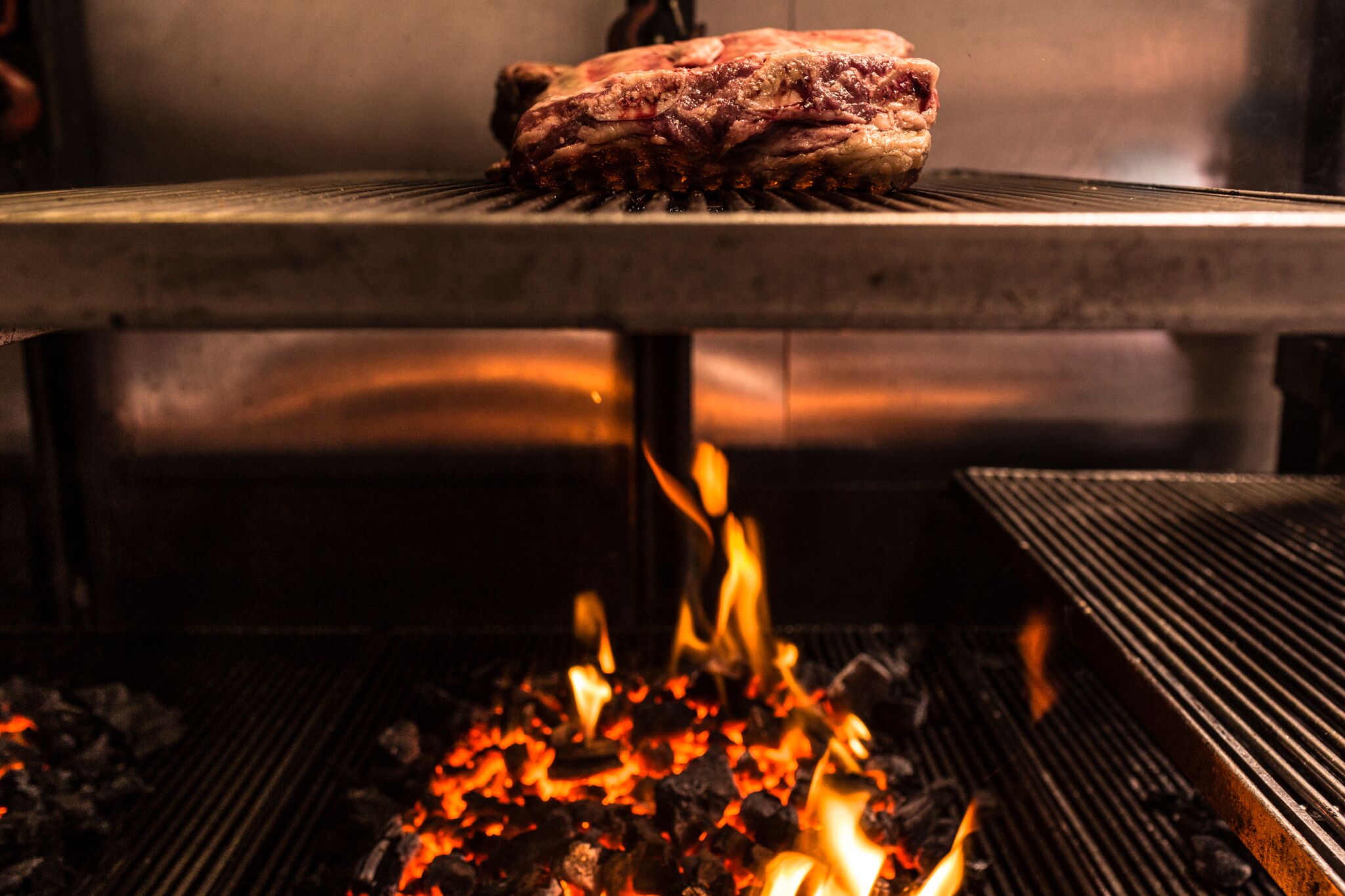
You sell and serve your beef by the gram – tell us how that works.
If a guest orders hanger for example, the waiter will ask how much they would like, let’s say it is 150 grams. The order will come to us in the kitchen, we will then cut as closely as we can to the size – to within 25g either side. The cut is then taken back out to the table to show the customer and make sure they are happy with the size and then we take it away and cook it.
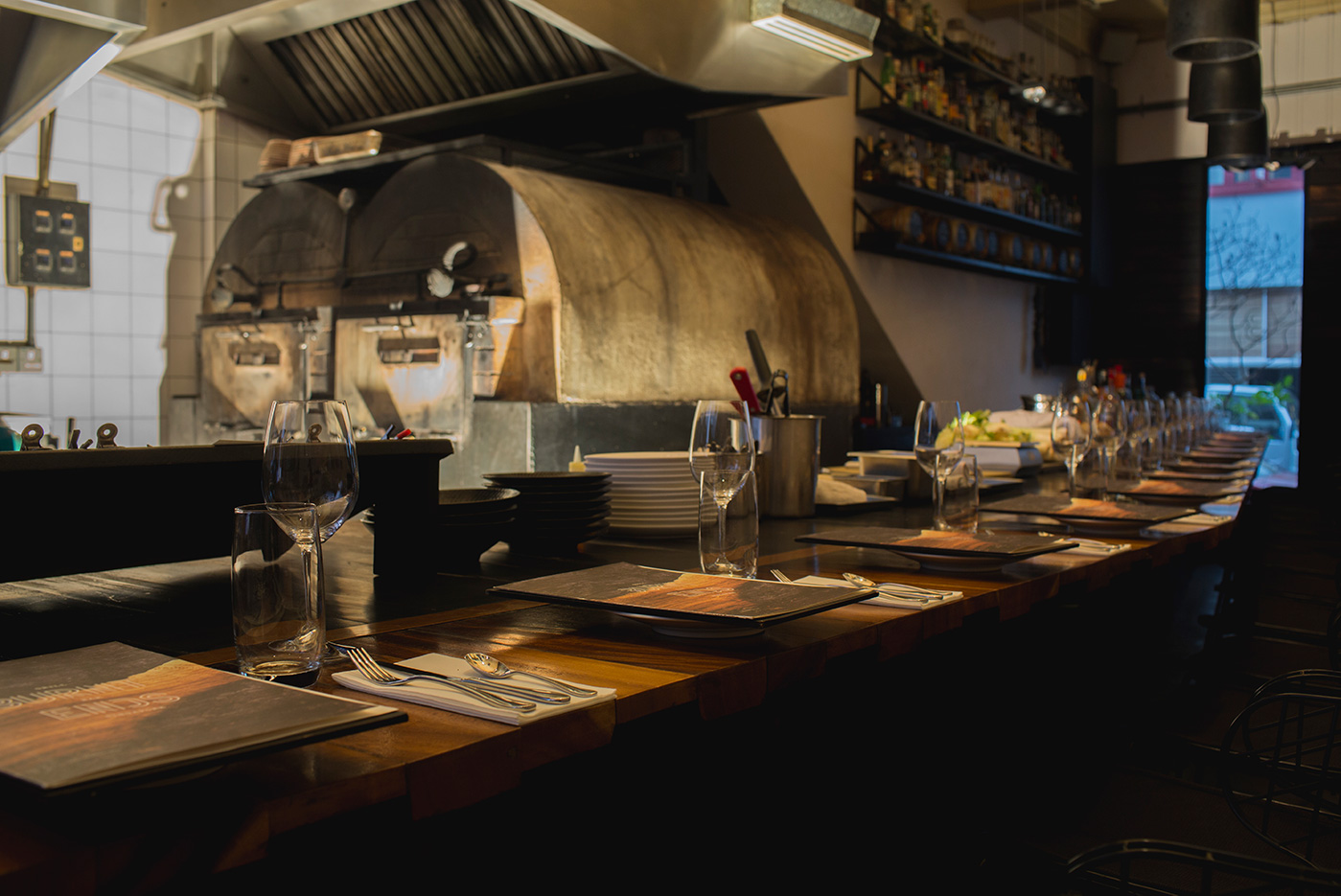
The heart of the venue – the four tonne dual cavity oven designed by Dave
In Australia, there’s an increasing interest amongst foodservice in the provenance of not only beef but produce in general. Is there similar interest in Singapore?
I think there are two sides to that – firstly, it is of interest here if you’re eating out a lot, you’re going to have a general interest. What’s more important I think as a chef is getting to know your growers and suppliers – having a direct relationship and knowing where your products are coming from is important. You know how the animals are raised and treated and you get to know the products specifically – you know what’s good and why. Through you, your customers then get to know what’s good and what’s not – and they won’t be coming back if it’s not good.
Best advice you’ve received in your career and who did it come from?
It was from my head chef when I was at Balthazar in Perth – he said ‘go buy yourself a book and start reading’. He had a Chez Nico book on his shelf by French chef Nico Ladenis and so I went out and I bought that and started reading.
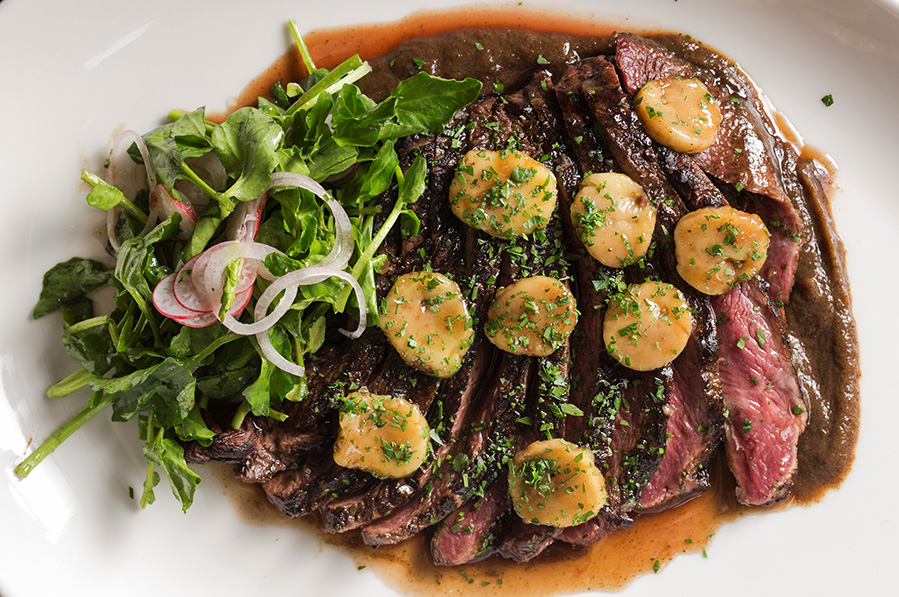
Hanger with bone marrow — on the menu at Burnt Ends
Last meal.. Where are you, what are you eating and who are you with?
Asador Etxebarri with my whole family – and we would have the whole menu, twice. No wait, I take that back, I would eat at Burnt Ends with my family because I’ve never had the menu here as a guest. So I’d do that, to see if it’s actually any good.

